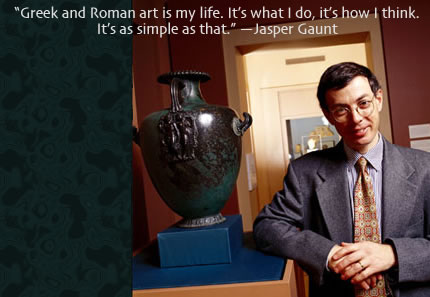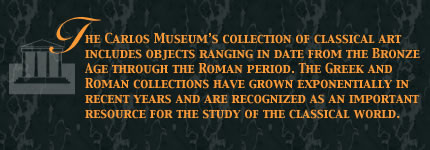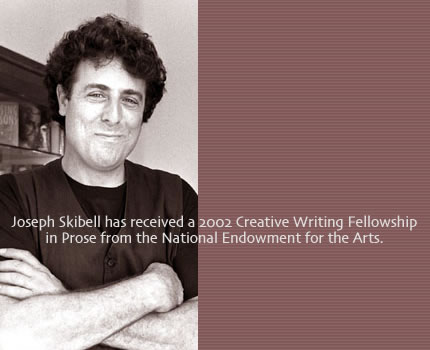|
Volume
78
Number
1

Playing
by the Book
The
Magic of Science
Vaccine
Research Center
A
Gringa Goes to São Paulo


Emory
University
Association
of Emory Alumni
Current
News and Events
Emory
Report
EmoryWire
Knowledge@Emory
Sports
Updates

|
Newby
named
to new post
Gordon
Newby, former director of the Middle Eastern Studies Department,
has been named executive director of the Institute for Comparative
and International Studies (ICIS). ICIS is made up of the Institute
of African Studies, Asian Studies, and Latin American and Caribbean
Studies, the Center for International Programs Abroad, and the
Emory College Language Center.
Emory
creates
stroke registry
Emory
has received $1 million from the Centers for Disease Control and
Prevention (CDC) to create a statewide stroke registry named in
honor of the late Georgia Senator Paul Coverdell, who died in
July 2000 from complications of a stroke. Associate Professor
Michael Frankel, chief of neurology at Grady Memorial Hospital,
is the principal investigator for the CDC grant and director of
the Paul Coverdell Stroke Registry in Georgia, which will help
hospitals in the state track the impact of strokes and the availability
of stroke treatment.
Rollins
family gives $4.2 million for Public Health Preparedness
Former
assistant U.S. Surgeon General Ruth Berkelman, professor of epidemiology
in the Rollins School of Public Health, has been named to head
a new program at Emory that will address critical needs in the
nation’s public health system revealed by the terrorist attacks
of last fall. The Office of Public Health Preparedness and Research
is being established through a $4.2 million gift from the O. Wayne
Rollins Foundation of Atlanta. The School of Public Health and
the Centers for Disease Control and Prevention will also be receiving
a portion of $20 million in federal funding being provided for
a nationwide network of centers for public health preparedness.
|
|
|
|
|
|

THIS
IS JASPER GAUNT’S IDEA OF AN ICEBREAKER:
A visitor to his office in the basement of the Michael
C. Carlos Museum admires several fragments of ancient Greek
pottery in a small box atop his cluttered desk. Despite the
obvious age and value of the shards, Gaunt encourages the visitor
to examine them and suggests he try to identify the mythological
figures with which they are decorated.
The
visitor, whose knowledge of archaeology is limited to the Paleo-Indian
artifacts he unearthed on a dig along the banks of the Delaware
River some thirty years ago, is stumped. He can make out a head,
an arm and leg, a bit of wing, perhaps. Gaunt attempts to tease
a guess from him, proffers a clue or two, and ultimately reveals
that one group of fragments depicts Odysseus and the Sirens,
the other Theseus and the Minotaur.
The
interaction reveals a great deal about Gaunt, who was named
curator of Greek and Roman art at the Carlos last fall: his
charm, his boyish enthusiasm, his total immersion in his subject
matter.
“Greek
and Roman art is my life,” he says. “It’s what
I do, it’s how I think. It’s as simple as that.”
The
child of British parents who taught in Rome, Gaunt was born
in the Italian capital and grew up playing amid the crumbling
columns and statuary of the Roman Forum, one of the few places
a child was safe from the city’s infamous traffic.
“In
those days, you were allowed to climb over columns and jump
off old statue pedestals and that kind of thing, so that was
kind of fun,” he says.
Returning
to England in the early 1970s, Gaunt attended Harrow, one of
Britain’s finest independent schools (founded in 1572,
it counts Winston Churchill and Lord Byron among its alumni).
There, at the age of seventeen, he studied firsthand the collection
of famed nineteenth-century Egyptologist and classical art collector
Gardener Wilkinson, in particular the Greek vases.

“I
began to research them and sometimes would just stare at them.
I was fascinated by what they were, how old they were,”
says Gaunt, who has recently completed work on a soon-to-be-published
catalog of the classical vases in the Harrow collection.
Gaunt
continued his education at Oxford, where he earned a master’s
degree in classics, then spent a year working at Christie’s
auction house in London. For three months of that year he worked
on the front desk evaluating objects brought in by the public
á la the Antiques Roadshow. That experience, like his
previous work with the collection at Harrow, taught him the
value of a hands-on approach to antiquities.
“In
a classroom, you can learn all about the dates of the Parthenon,
the sculptors who were involved in it and what the sculptural
program means, what it cost, the civic pride and political subtexts,
and that’s all very, very interesting and important,”
he says. “But you never learn about the vases, the bronzes,
the glass, the silver, the gemstones, the terra cotta–and
these survive in very great numbers. There is sort of a split
in archaeology between what is taught in the classroom and what
goes on in a museum. And I happen to be interested in what goes
on in a museum. It is the objects that really matter.”
Objects
such as the pottery shards on his desk “are fabulous for
teaching. When you have a class, you can hand them round. They
are fragile, but if you treat them with respect nothing’s
going to happen. And that’s really what they’re for.”
Gaunt
came to the United States to work with noted classicist Dietrich
von Bothmer, whose study of Greek vases is world renowned. He
soon discovered that his master’s degree in classics from
Oxford University, impressive though it may have been to his
countrymen in England, was virtually worthless here.
“They
didn’t believe in what I had,” he says, laughing.
“It was a case of characteristic academic pride.”
So
he completed a second master’s and a Ph.D. in classical
archaeology at the New York Institute of Fine Arts prior to
being offered a position at Emory.

What
drew him to the Carlos, Gaunt says, was an opportunity rare in
higher education. Although the museum officially is some eighty
years old, its renaissance as a significant cultural institution
took place only recently, with its 1985 renovation and the 1993
dedication of its current home. The Carlos Museum’s collection
of classical art includes objects ranging in date from the Bronze
Age through the Roman period. The Greek and Roman collections
have grown exponentially in recent years and are recognized as
an important resource for education and the study of the classical
world.
“The
Carlos is, in my view, unique, [because] it is a very young
museum,” he says. “If you wander through the galleries
you’ll see that although there were some bits and pieces
that were given by various people over the years, very few of
the labels go back to before 1985. Very, very few. [Associate
Professor] Bonna Wescoat has been painstakingly, slowly, quietly,
building up the collection with the help of Michael and Thalia
Carlos. The generosity of the Carloses has made, literally,
all the difference. Without their support, we would be nowhere.
“What
has happened more recently is that the Carloses have made a
very significant pledge to support the acquisition of new pieces
on a scale which is really unprecedented in university museum
terms. And it means the museum is in a position to seek out
and go for the very best of what’s available. We can bring
in pieces which are just as good as anything anybody else has–anywhere.
And building a collection seems to me to be something which
is enormously creative. It’s very, very exciting.”
One
such piece, recently acquired, is a garnet portrait of a Hellenistic
queen, Berenice II, who married the grandson of Ptolemy I, a
general under Alexander the Great and later ruler of Egypt.
Though small and incomplete, “the style is sublime,”
Gaunt says. Another recent acquisition is a perfume vessel from
500 BC, used by Greek athletes to scent their bodies after cleaning
themselves with a strigil, a curved blade used to scrape dust,
oil, and sweat from the skin after exercise.
“It
is the most beautiful, beautiful piece of design; it has a lovely
shape,” Gaunt says. “And it is one of only two in
America. The other one was purchased by the Metropolitan Museum
in 1923.”
In
addition to building the collection through gifts and purchases,
Gaunt hopes to enhance its impact through reorganization.
“What
has happened is that the collection has grown in fits and starts,
and pieces have been bought and popped into the most sensible
case,” he says. “But with a tiny bit of shuffling,
you’ll get a much, much clearer image of what’s going
on. It’s like fine tuning the radio.”–A.B.
|
|

Assistant
Professor of English/Creative Writing Joseph Skibell
has received a 2002 Creative Writing Fellowship in Prose from
the National Endowment for the Arts. Skibell was one of thirty-six
recipients selected from a field of 1,296 applicants in fiction
and creative nonfiction. He will use the award to fund a leave
during which he will begin work on his third novel, a “comic
epic on the theme of the on-again, off-again relationship between
God and the Jewish people.”
Critics
praised Skibell’s debut novel, A Blessing on the Moon,
as a literary tour de force. An allegory of the experiences
of European Jews during the Holocaust, told from the perspective
of a slain Polish Jew, A Blessing on the Moon received
the Richard and Hinda Rosenthal Foundation Award from the American
Academy of Arts and Letters and the Steven Turner Award for
First Fiction from the Texas Institute of Letters.
“Daring
in its haunting, often painful honesty, dense in thoughtful
observation and unsparing incident, the novel aims for literary
status while at the same time proving itself an unlikely page-turner,”
Patrick Giles wrote in the New York Times Book Review.
“An act of commemoration, . . . A Blessing on the Moon
is also a confirmation that no subject lies beyond the grasp
of a gifted, committed imagination.”
Skibell
received his bachelor’s degree from the University of Texas
at Austin in 1981, and from 1993 to 1996 he was a James A. Michener
Fellow at the Texas Center for Writers, where he earned his
MFA in creative writing. From 1996 to 1997, he was a Jay C.
and Ruth Hall Fellow in Fiction at the Wisconsin Institute for
Creative Writing at the University of Wisconsin at Madison.
He joined the Emory faculty in 1999.
|
| |
|